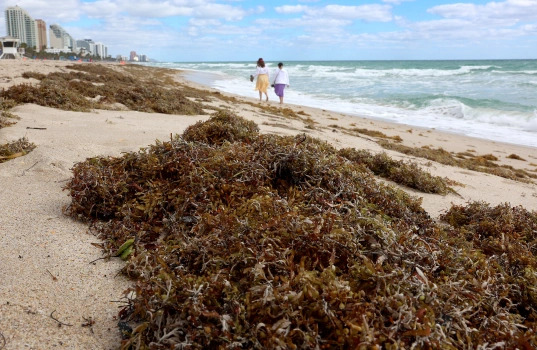Regenerative agriculture is needed to heal our world and help lead us to a net zero world where we cut greenhouse gas emissions as close to nothing as possible.
In conventional agriculture the farmer applies toxic chemicals to both fertilize the fields and to kill the invasive weeds that lower yields. The problem is that those chemicals kill the soil so that more and more chemicals are needed to bolster diminishing yields.
The chemical fertilizers and weed killers do not bond well to the soil so that they run off when it rains. This runoff is polluting our streams, river and oceans. The excess nutrients create algal blooms which consume all the oxygen in the water killing fish and
other wildlife leading to massive dead zones in the oceans into which the nutrients and chemicals drain. One of the largest known dead zones is found in the Gulf of Mexico. This dead zone is estimated to be about 8,000 square miles, an enormous stretch of ocean to be void of life.
The Gulf dead zone is caused by agricultural runoff from the U.S. Midwest, particularly runoff comprised of synthetic fertilizers used on farmlands. The Mississippi River drains 41% of North American continental water into the Gulf of Mexico, and most of the states bordering the river rely heavily on industrial agriculture in order to maintain the health of their economies. The runoff produced by these
states consists largely of inorganic fertilizers that contain high concentrations of synthesized nutrients such as nitrates and phosphates. The river then carries these excess nutrients into the Gulf of Mexico, resulting in a massive dead zone. The Gulf dead zone occurs seasonally; when farmers begin fertilizing their lands in preparation for crop season in the spring, the dead zone in the Gulf is at its largest. While the Gulf dead zone is one of the most commonly talked about dead zones, there are more than 400 of these zones currently occurring worldwide, an international crisis that must be addressed.
Eric Schaeffer, executive director of the Environmental Integrity Project, an environmental watchdog founded by former EPA enforcement attorneys, stated that the failure to confront agriculture “is probably the biggest program failure in the Clean Water
Act. This is difficult politically, but we have to confront the fact that agricultural runoff is really the leading cause of water pollution in the U.S. today.”
The chemical industry is the culprit in this agricultural dystopian scenario and its focus on profits instead of soil health is ruining our environment. The truth is that using regenerative agriculture we can improve our yields while improving our soil. After just a year of regenerative agriculture noticeable improvement of soils are observed including the return of earthworms to soil that had none from the negative effects of toxic soil amendments. Living soils help to absorb carbon at a rapid rate.
Luckily, we here in the Greater Lehigh Valley area have two great nonprofit organizations that are promoting regenerative agriculture. The Seed Farm outside of Emmaus teaches farmers how to farm using organic practices. In addition the organization has a spring and fall plant sale of vegetables, herbs and flowers. This year’s sale is Saturday, May 13 from 9 a.m. – 3 p.m. and Sunday, May 14 from 11 a.m. – 2 p.m.
The Rodale Institute has been conducting groundbreaking research on regenerative organic agriculture since 1947. Founded by Bob Rodale the institute has expanded and teaches organic practices around the world. Experts who work there also teach local farmers how to farm organically in the Lehigh Valley and around the world.
Source : TheMorningCall

